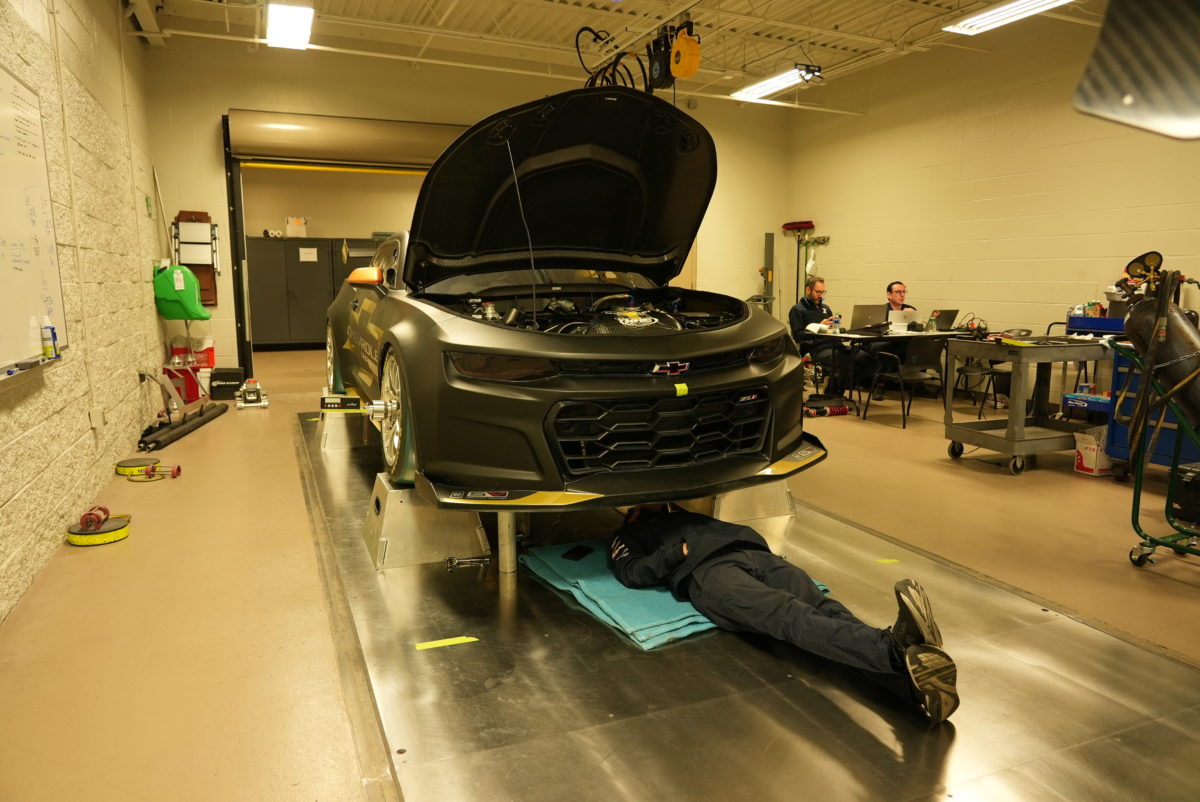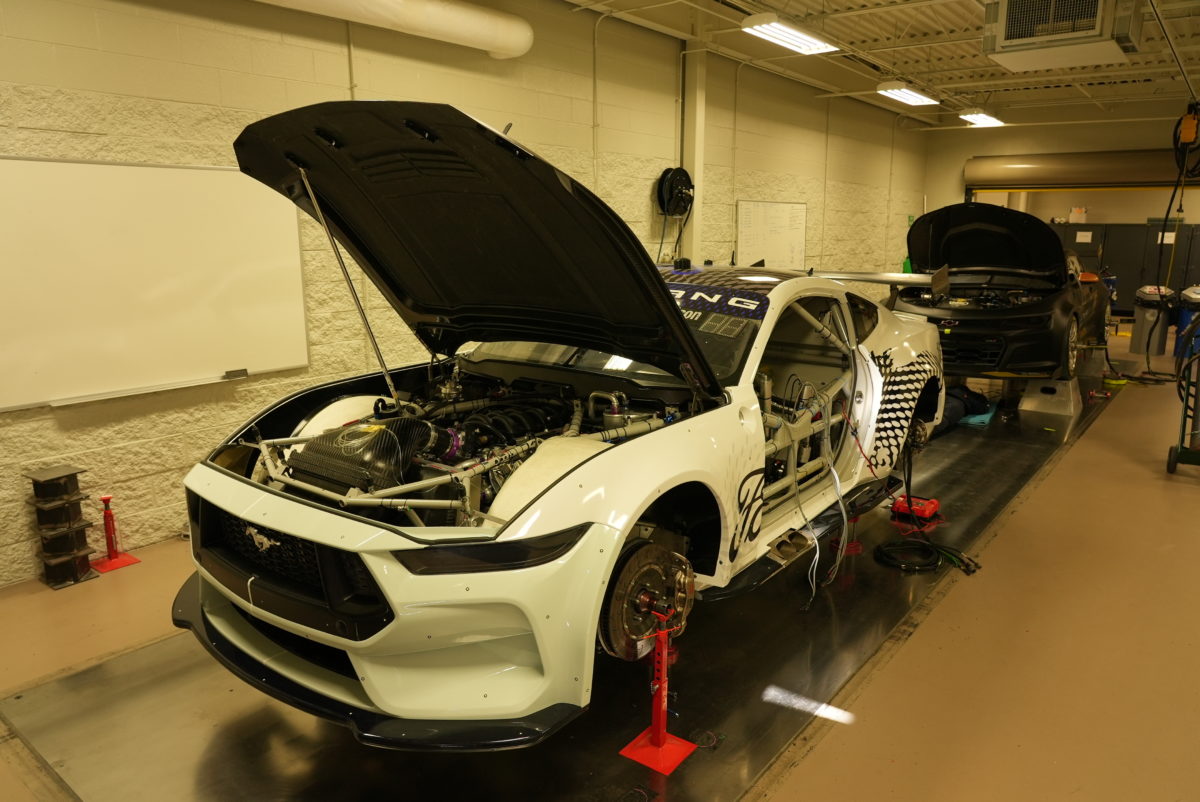

Preparing a Supercar for wind tunnel testing is an extensive process, as championship CEO Shane Howard has explained.
A Camaro from Chevrolet homologation team Triple Eight Race Engineering and a Mustang from Ford counterpart Dick Johnson Racing have been sent to Windshear’s North Carolina facility for historic wind tunnel parity testing.
With the benefits of such an activity including a controlled environment, and hence repeatability of testing so as to give an accurate assessment of the aerodynamic properties of the two cars, there is plenty that must be done to ready them for the process.
That preparation includes far more than just assembling a kit of bodywork pieces to cycle through, with cars being digitally scanned and tyres coated in Teflon.
“Obviously, we’ve brought the two cars, the spares, the tools, the tools that the teams have developed [for] how they’ll tune the car to balance them if necessary, once we establish what the values of the cars are, and what, if anything, needs to be adjusted to achieve parity between the two models,” explained Howard.
“So, teams have all their tools with them, we sent over a number of rims and tyres, all the tyres have been Teflon-coated to run on the steel conveyor belt in the tunnel itself.
“[There is an] Enormous amount of preparation. The cars have been scanned. The gentleman who scans all NASCAR’s racing cars has scanned our cars and that was pretty exciting as well.
“The level of the equipment and the technology that they had in scanning the cars and being able to adjust the car’s body just in process was very good.
“He’ll be back after we’ve been through [the wind tunnel] and scan the cars finally, which will become, basically, the file that sets the rules and regulations for the templates, et cetera, going forward.”
READ MORE: Inside the Windshear wind tunnel
As well as the bodywork itself, Supercars already measured cars at various ride heights as part of VCAT, and will be using Windshear’s own active ride height system.
All of the work has to be crammed into as little as 36 hours across three days (although there is understood to be potential for an extra two days if deemed necessary) but some personnel have been in the United States for five days already in order to prep cars.
“We’ve got our Supercars technical [personnel] here, both homologating teams have got their senior category technical directors and engineers, [and] they’ve got crew because everybody’s got to prep the cars,” added Howard.
“I mean, they’ve been putting the Windshear active ride height into the cars today.
“That’s quite a process and working with Dynamic, our CFD supplier and contractor, to map all the cars and get them ready to be able to put in the tunnel tomorrow morning [Friday morning local time/Saturday morning AEDT].
“It’s been some very long hours here and, in the next three days, they’ll be going quite intense.”
The wind tunnel testing was decided upon after a campaign which had been dominated to that point by Camaros, predominantly from Triple Eight and eventual championship winner Erebus Motorsport, before the pendulum swing back to the Blue Oval when Mustangs swept the final two events of the campaign following a second in-season aero change.
It is a big investment from Supercars, which has been undertaken in a bid to finally end the ructions over aerodynamic parity, with transient dynamometer testing of engines to come.






















Discussion about this post